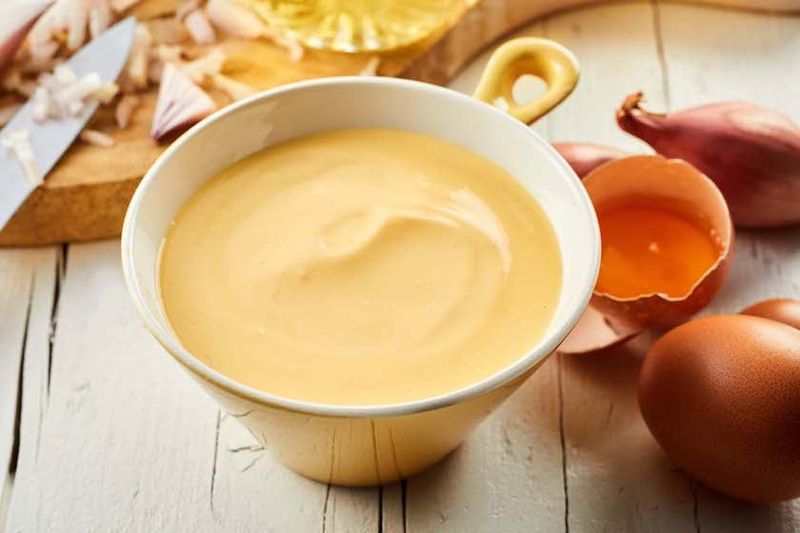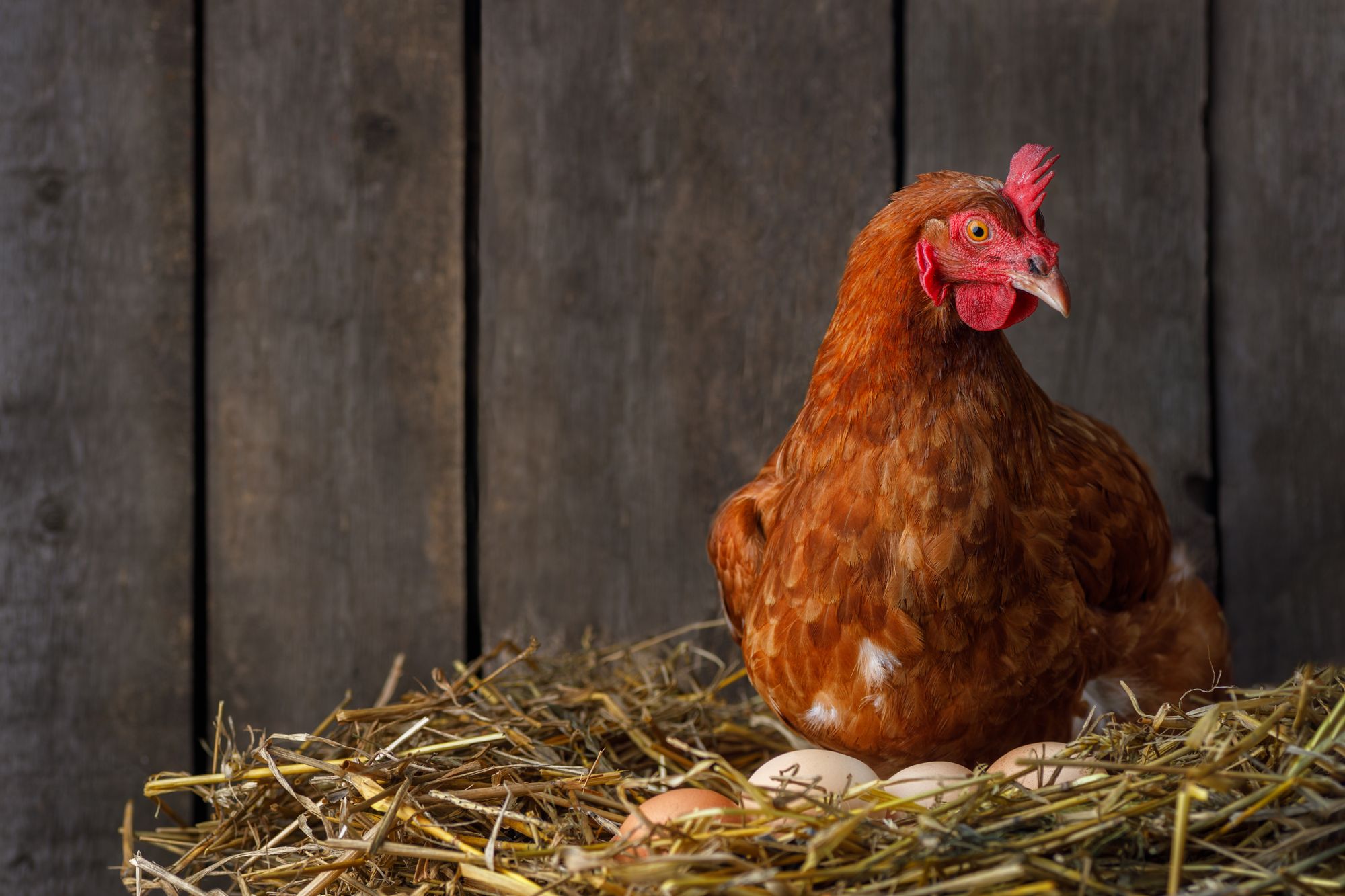The Super-powers of Eggs


All the things eggs can do!
When you have chickens, then you likely have eggs to look forward to on a near daily basis. Most people appreciate the nutrition and health benefits of eggs. But food science looks at eggs much differently.
You can almost think about eggs as having superpowers, bringing functional properties to bear depending on how they are used or prepared in foods. For example, angel food cakes and mayonnaise are wildly different, but in each of those, the success of the final dish hinges upon the functional property of the eggs.
There are eight basic functional properties to discuss: foaming, binding, clarification, coagulation, emulsification, crystallization control, color, and flavor.
Let’s have a look.
Foaming
One of the easiest examples of foaming or aeration as a functional property of eggs is angel food cake. The rise that you get in baking an angel food cake is from the use of egg white. Egg white are beaten to incorporate lots of air which becomes trapped.
The process of beating the egg white stretches the protein—it’s also called denaturing. The more you beat the egg whites, the smaller the air bubbles get, but you gradually get more and more of them. The foam becomes stabilized which leads to leavening action, and when the height of the cake increases, it becomes less dense.
Two proteins do this, ovalbumin and ovomucin. Ovalbumin’s job is to create the volume during the whipping of egg whites. Ovomucin keeps the air bubbles in their place during the heat of cooking. Ovomucin also is flexible and stretches to enlarge so that air bubbles can be surrounded.
Because of the nutritional profile of egg whites, the cake has fewer calories than cakes that use the egg yolk.
Baking tip:
If you are separating egg whites from egg yolks in order to make a foam for something (meringue, or angel food cake) then you cannot get even the slightest amount of yolk in with your egg whites. The fat from the yolk or other fats prevents the foam from forming.
Therefore, avoid plastic bowls, as they can retain oils and prevent foam formation.
Binding
Eggs can be used to hold other ingredients together. This benefits the food by creating a different texture as well as preventing crumbling or losing its shape.
The protein in eggs act synergistically with other proteins in foods, such as meatloaf, crab cakes, or sausage to create a stable matrix and desirable texture.
That’s also why eggs are used to bind breading to different kinds of foods.
Clarify
The process of clarifying (or clarification) is when you take a fluid that is not exactly clear and make it significantly clearer. Egg whites can do this for you.
For example, you may wish to clarify consommé or broth. Small particles cause it to be opaque or cloudy are captured in the egg white when it is mixed into the fluid. The egg white is heated, which coagulates the white, and the clarified fluid can be poured off into another container.
Coagulation
Coagulation is when a fluid changes into a solid or semi-solid state, like a gel. Eggs do this well and they do not change back into the fluid state once cooked. Coagulation can thicken foods like a custard, or change the structure of a baked food like cake.
As proteins denature (i.e. are altered), coagulation can occur over a wide array of temperatures. Coagulation or gelation can occur by the use of heat, mechanical beating, adding sugar, adding acids, or adding an alkali substance.
Many of the baked goods we love that include eggs also are sweetened with sugar, which will raise the temperature at which coagulation occurs.
Emulsification
Oil and water don’t mix…that is, unless you add an egg! Sauces like mayonnaise, béarnaise, mousseline, and aiolis are all based on an emulsification.
Eggs have both positive and negative bonds that allow for a bridging of oil and water to make an emulsified product. Mayonnaise is a classic example of mixing oil and an acidic water source, like vinegar or lemon juice. The emulsion is thicker than its component parts and this viscous fluid is more stable.

Making sauces often requires a little elbow grease. Whipping the egg mixture with a whisk to create the emulsion is part of your success unless you use a blender.
You will also need to very slowly drip a thin ribbon of oil into your mixture as you whisk or blend. Sometimes if oil is added too quickly, the mixture may “break” and fail to emulsify evenly.
- Aiolis are used as dips for different vegetables and is based on mayonnaise.
- Hollandaise sauce and Bearnaise sauce follow the same principles, but are thinner.
- Mousseline can be served over fish.
Crystallization control
Mouth feel and texture of your final product are important. In some foods, you do not want crystallization, and eggs help you prevent crystal formation in foods like frostings, nougat, ice cream, or truffles.
Confections use a combination of sugar in water and that can lead to crystallization. Add eggs, and you can slow down this process or interfere with it altogether. In ice cream, eggs help with creating smaller ice crystals, which prevents clumping—the lecithin in eggs increases the viscosity of the base mixture. Adding eggs to ice cream also helps to prevent freezer burn.
Color
Egg yolks have a characteristic yellow or yellow-orange color. That color is achieved by the hen because she adds the carotenoids, specifically xanthophyll, to the yolk from her diet.
Yellow cakes or pastas are perfect examples of how the egg adds color to foods. Also, the nice brown color of some baked goods can be enhanced through adding eggs to the food. You can also brush the outside of some baked goods with an egg wash to get a darker brown color.
Flavor
Some foods taste “egg-y” and that is their claim to fame. Crème brûlée, custard pie, popovers, and brioche all get their flavor from eggs and that can be heavy or light.
The fat from yolks can add richness to a dish that cannot be achieved any other way. When you add fat from the yolk, some other flavors such as vanilla are released more readily.
Part of flavor is texture. Sometimes a food is only considered a success if the flavor, texture, and mouthfeel are aligned to make a pleasurable experience. Eggs act in synergy with so many of the other ingredients that it can make it difficult to pinpoint the tastiest part!
Tags:Plain Talk

Chicken Whisperer is part of the Catalyst Communications Network publication family.











